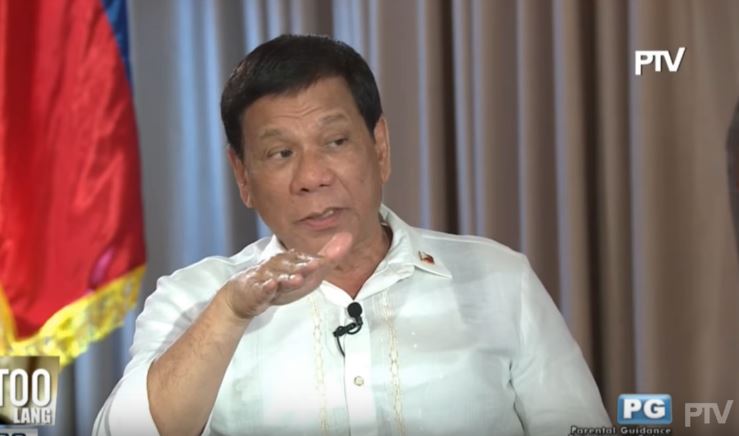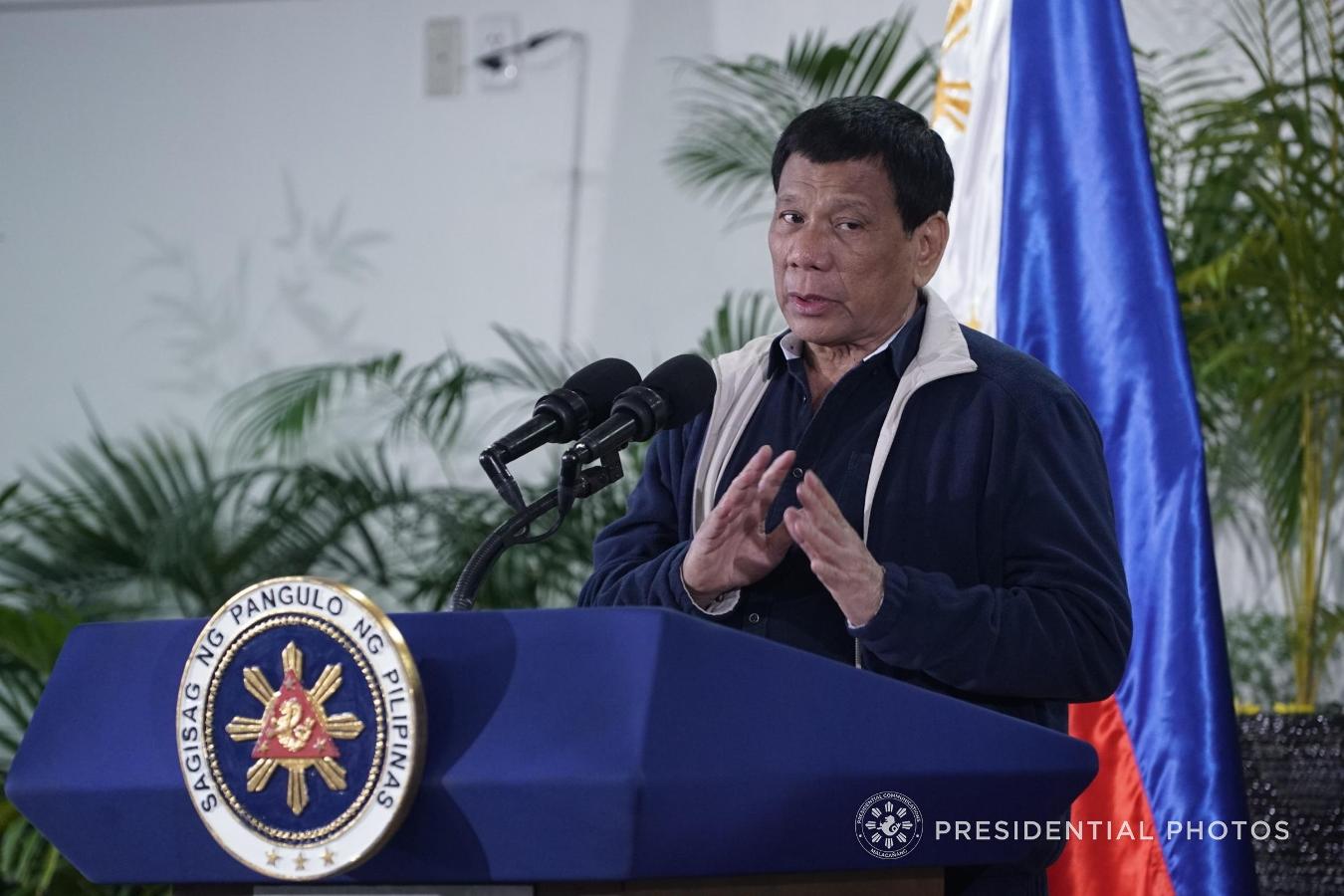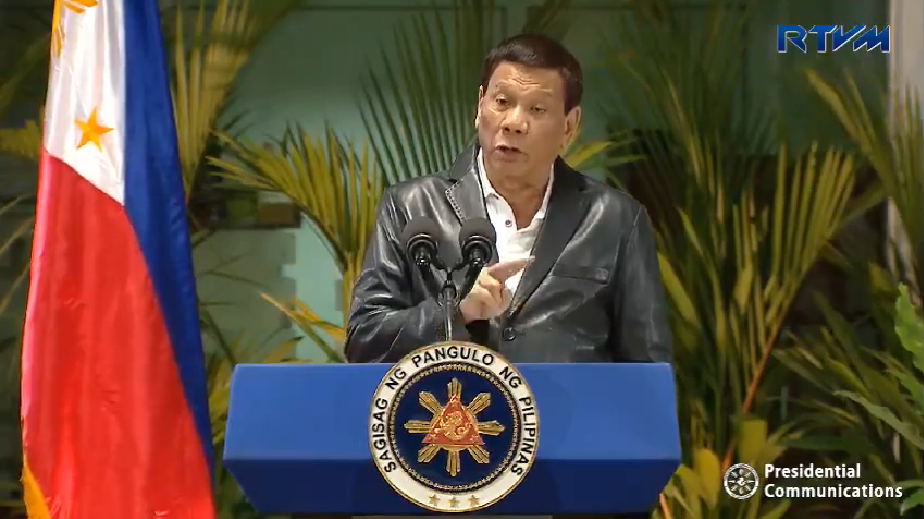Claiming a likely destabilization plot against his administration, President Rodrigo Duterte threatened to “declare revolutionary government,” an idea that only a month ago he said he would not entertain.
STATEMENT
In a television interview Oct. 13, Duterte said:
“I was elected by the people. And if I sense that the country’s about to go overboard, I will declare revolutionary government. Hindi ko kayo tinatakot, pero hulihin ko kayo lahat (I’m not scaring you, but I will arrest all of you). And I will declare a full-scale war against the New People’s Army.”
Source: ‘Sa Totoo Lang’ with President Rodrigo Duterte and Erwin Tulfo, PTV4, Oct. 13, 2017, watch from 25:28 to 25:49
FLIP-FLOP
Yet, in a speech Aug. 29, citing the Corazon Aquino administration, Duterte said he would not consider a revolutionary government during his term:
“I was not joking but I am not into it. For the Philippines to really go up, sabi ko, ang kailangan ng mga tao is not martial law (what people need is not martial law). Go for ginawa ni Cory (what Cory did), revolutionary government. Pero huwag kayong magtingin sa akin, hindi ako pwede diyan (But don’t look at me, I am not amenable to that).”
Source: Speech of President Rodrigo Duterte during the Mass Oath-Taking of Newly Appointed Officials, watch from 32:05 to 32:31
BACKSTORY
Declaring a revolutionary government means rejecting the current constitution, whether there’s a destabilization plot against the government or not, former Solicitor General Florin Hilbay told VERA Files.
“The only question is whether (the president) has the support,” Hilbay added.
The Corazon Aquino administration, propelled to power by the 1986 People Power Revolution that toppled strongman Ferdinand Marcos, in its first year ruled by decree, adopting a provisional “Freedom Constitution”:
“The world-famed bloodless coup of February 22-25, 1986 ushered in a new political regime. (Aquino), backed by a coalition of forces from both ends of the political spectrum, forged a new government, triggering a chain of events that dramatically changed the political landscape of the country and signalled the rebirth of democracy. These political changes were: the abolition of the Batasang Pambansa following the proclamation of a new revolutionary government; the organization of a Constitutional Commission that drafted a new charter which, in turn, was ratified in February 1987; the rebirth of the old bicameral system; and the election of Members to the new Congress.”
Source: House of Representatives, Philippine Congress History
A 2003 Supreme Court decision, citing a 1992 case, defines “revolution” as:
“the complete overthrow of the established government by those who were previously subject to it or as a sudden, radical and fundamental change in the government or political system, usually effected with violence or at least some acts of violence.”
Sources:
Proclamation no. 3. Freedom Constitution
G.R. No. 104768. Republic of the Philippines v. Sandiganbayan
Interview with lawyer Florin Hilbay, University of the Philippines College of Law
(Guided by the code of principles of the International Fact-Checking Network at Poynter, VERA Files tracks the false claims, flip-flops, misleading statements of public officials and figures, and debunks them with factual evidence. Find out more about this initiative.)





